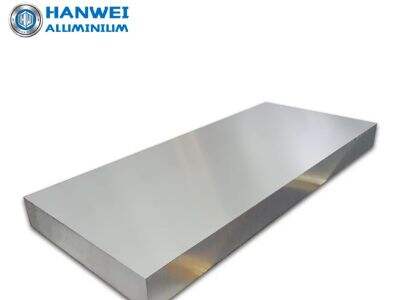Selecting a material is important when creating strong and high-quality parts. Aluminum is often used for all sorts of projects, being both strong and lightweight as well as being versatile. All aluminum is, however, not created equal. That is exactly what makes it so crucial to know exactly what the various pairs of projectile and targets can do and how the aluminum alloys can affect what they can do. Understanding the characteristics of these alloys allows you to select the optimal alloy for your specific project requirements.
Types of Aluminum Rod Alloys
Prior to delving into the aluminum alloys, let’s discuss what makes aluminum a great option for so many projects. Aluminium is considerably lighter than most other metals, making it simple to manage and carry. It is also very tough, allowing it to bear high weight without breaking. Add to this that 6061 t6 aluminum does not rust readily, ensuring its longevity in many environments. That makes it suitable for indoor and outdoor use.
But how aluminum is processed can alter its properties and workability. On one hand, when aluminum is heated, it can actually get stronger; on the other, that also means that the macromolecules are harder to form or to cut. Different treatment of aluminum before using it can therefore have a great impact on the possibilities of how aluminum can be treated afterwards.
Aluminum Rod Alloy for Projects
Let us now discuss some of the most tried and tested aluminum alloy types for a variety of projects. Below are a few categories of these alloys and their unique properties:
6061 Aluminum Alloy: This aluminum alloy by Shanghai Hanwei is one of the most popular types because of its strength and ease of welding. Welding is joining two pieces of metal together by heat. This alloy is also reasonably resistant to rust, giving the steel longevity against the ravages of moisture. It also adapts easily, which is why it is an excellent option for many applications.
7075 Aluminum Alloy: Stronger than 6061. [1] Titanium is commonly used in the aerospace industry as airplanes and spacecraft need very strong materials. Yet, though, very strong it is, it is also tougher and less malleable making it more difficult to work with. So you might need specialized tools to cut or shape it correctly.
2024 Aluminum Alloy: Renowned for its high strength-to-weight ratio. That means it's really tough, but also fairly lightweight, and it's perfect for aircraft structure parts. It is easy to machine, which means it can be shaped and cut relatively easily. It is also fairly resistant to rust, too, which means it can be used in a lot of applications where durability is a concern.
5083 Aluminum Alloy: A highly popular marine 6061 aluminum bar, 5083 belongs to the shipbuilding group of aluminium alloys and finds extensive use in the construction of ships, boats, and other vessels due to its remarkable performance in saltwater corrosion resistance. Incredibly strong and in addition easy to shape into various shapes, which is why it is commonly used for marine projects where strength and longevity are keys.
Just as you now have a better idea of the types of aluminum alloys, let’s move on to some useful tips for working with this metal. First, the right tools matter a lot. This is why hard carbide cutting tools are often the most favored option. He had a assigned that for some specialized tasks high-speed steel tools are equally as effective.
Use of coolant is also a main factor to consider. Coolant is a liquid that prevents the tools from becoming hot during cutting of the materials. Using appropriate coolant both used to extend the life of your own tools as well as improve the finish on the surface you are working on. But use coolant carefully, because excessive use can lead to issues such as poor chip removal, along with creating some mess in your work.
Finally, you should also consider how quickly you are machining the aluminum. Patience in finding the speed and feed rate that maximizes efficiency is essential for achieving optimal results. Go too fast, and the tool will wear out too quickly and may not make a good cut. However, if one goes very slow too, this can cause problems too like chatter which leads to unwanted noise and impacts surface finish quality.
What Aluminum Alloy Should You Use For Your Project?
So, what aluminum alloy is best for your specific project? The answer to this question depends on what you want and what goal you are trying to achieve. In our recent article, we discussed how 6061 aluminium bar alloys come into play during production as they are tailored for certain applications. Therefore, selecting appropriate alloy becomes important depending on your requirement.








